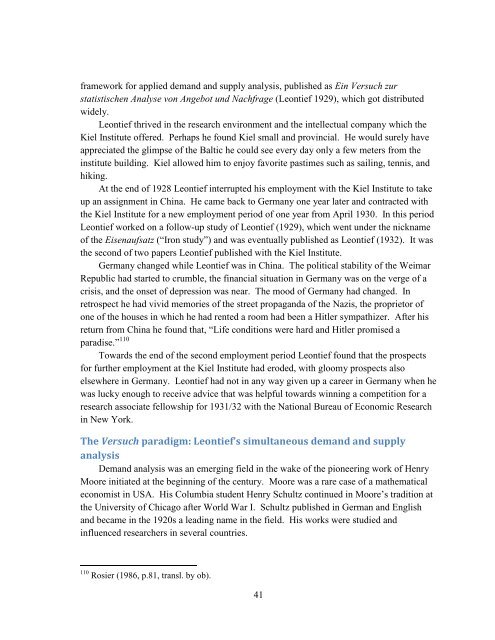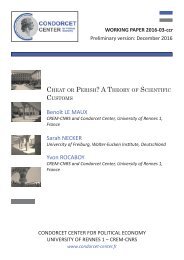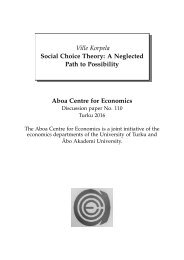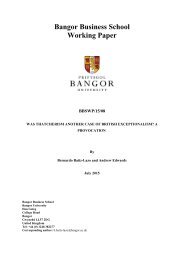MEMORANDUM
n?u=RePEc:hhs:osloec:2016_018&r=hpe
n?u=RePEc:hhs:osloec:2016_018&r=hpe
You also want an ePaper? Increase the reach of your titles
YUMPU automatically turns print PDFs into web optimized ePapers that Google loves.
framework for applied demand and supply analysis, published as Ein Versuch zur<br />
statistischen Analyse von Angebot und Nachfrage (Leontief 1929), which got distributed<br />
widely.<br />
Leontief thrived in the research environment and the intellectual company which the<br />
Kiel Institute offered. Perhaps he found Kiel small and provincial. He would surely have<br />
appreciated the glimpse of the Baltic he could see every day only a few meters from the<br />
institute building. Kiel allowed him to enjoy favorite pastimes such as sailing, tennis, and<br />
hiking.<br />
At the end of 1928 Leontief interrupted his employment with the Kiel Institute to take<br />
up an assignment in China. He came back to Germany one year later and contracted with<br />
the Kiel Institute for a new employment period of one year from April 1930. In this period<br />
Leontief worked on a follow-up study of Leontief (1929), which went under the nickname<br />
of the Eisenaufsatz (“Iron study”) and was eventually published as Leontief (1932). It was<br />
the second of two papers Leontief published with the Kiel Institute.<br />
Germany changed while Leontief was in China. The political stability of the Weimar<br />
Republic had started to crumble, the financial situation in Germany was on the verge of a<br />
crisis, and the onset of depression was near. The mood of Germany had changed. In<br />
retrospect he had vivid memories of the street propaganda of the Nazis, the proprietor of<br />
one of the houses in which he had rented a room had been a Hitler sympathizer. After his<br />
return from China he found that, “Life conditions were hard and Hitler promised a<br />
paradise.” 110<br />
Towards the end of the second employment period Leontief found that the prospects<br />
for further employment at the Kiel Institute had eroded, with gloomy prospects also<br />
elsewhere in Germany. Leontief had not in any way given up a career in Germany when he<br />
was lucky enough to receive advice that was helpful towards winning a competition for a<br />
research associate fellowship for 1931/32 with the National Bureau of Economic Research<br />
in New York.<br />
The Versuch paradigm: Leontief’s simultaneous demand and supply<br />
analysis<br />
Demand analysis was an emerging field in the wake of the pioneering work of Henry<br />
Moore initiated at the beginning of the century. Moore was a rare case of a mathematical<br />
economist in USA. His Columbia student Henry Schultz continued in Moore’s tradition at<br />
the University of Chicago after World War I. Schultz published in German and English<br />
and became in the 1920s a leading name in the field. His works were studied and<br />
influenced researchers in several countries.<br />
110 Rosier (1986, p.81, transl. by ob).<br />
41





